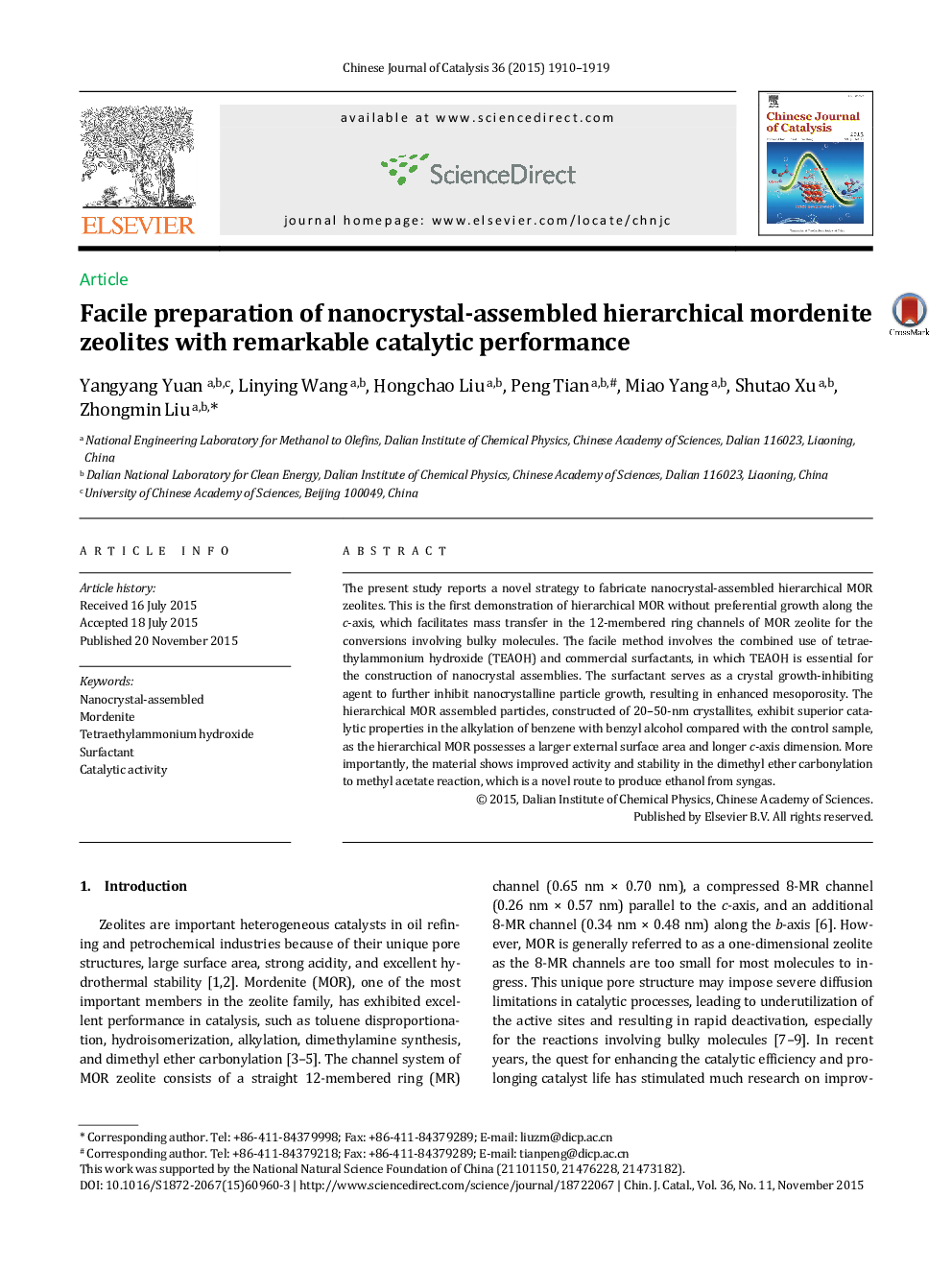| Article ID | Journal | Published Year | Pages | File Type |
|---|---|---|---|---|
| 59809 | Chinese Journal of Catalysis | 2015 | 10 Pages |
The present study reports a novel strategy to fabricate nanocrystal-assembled hierarchical MOR zeolites. This is the first demonstration of hierarchical MOR without preferential growth along the c-axis, which facilitates mass transfer in the 12-membered ring channels of MOR zeolite for the conversions involving bulky molecules. The facile method involves the combined use of tetraethylammonium hydroxide (TEAOH) and commercial surfactants, in which TEAOH is essential for the construction of nanocrystal assemblies. The surfactant serves as a crystal growth-inhibiting agent to further inhibit nanocrystalline particle growth, resulting in enhanced mesoporosity. The hierarchical MOR assembled particles, constructed of 20–50-nm crystallites, exhibit superior catalytic properties in the alkylation of benzene with benzyl alcohol compared with the control sample, as the hierarchical MOR possesses a larger external surface area and longer c-axis dimension. More importantly, the material shows improved activity and stability in the dimethyl ether carbonylation to methyl acetate reaction, which is a novel route to produce ethanol from syngas.
Graphical AbstractA facile synthetic strategy is developed to fabricate hierarchical mordenite (MOR) zeolites assembled by 20–50-nm crystallites, which exhibit greatly enhanced activity, selectivity, and stability in catalytic reactions.Figure optionsDownload full-size imageDownload as PowerPoint slide
